Some movies change us, some movies stay with us forever, and some movies never lose their hold over us — movies like “The Exorcist”.
During my early years as a budding horror enthusiast, I vividly recall my father picking me up a horror magazine from the supermarket that announced a list of the 50 scariest movies of all time. And while I can’t quite remember the name of the magazine (I know it wasn’t Fangoria), naturally, my interest was piqued. I remember endlessly pouring over the pages that fired off the crown jewels of the genre – Alien, Dawn of the Dead, Evil Dead II, Rosemary’s Baby, Carnival of Souls – building to the number one and two spots that were of particular interest.
Believe it or not, 1968’s Night of the Living Dead nabbed the top spot, an upset that made me beam with delight because I had seen that night of total terror (on grainy VHS!) and lived to tell the tale.
Shortly after, there was a dinner where the adults were passing around my coveted magazine (or should we call it my “horror bible?”), chatting up about the various entries on the list, with the number two pick causing quite the flurry of conversation and reminiscing.
Sitting just behind George A. Romero’s army of undead cannibals was a portrait of pint-sized Regan MacNeil, glaring up off the page with the piercing stare of Pazuzu, emitting a death ray of malice capable of shattering your soul into a million pieces.
Number two was director William Friedkin’s 1973 classic, The Exorcist, a selection that drew groans, grumbles, and gasps from everyone seated down for a big plate of spaghetti (complete with my grandmother’s beloved sauce). And no, it wasn’t from its ranking on the list!
Instantly, the stories started about the film’s previews, with my mother declaring she left the room any time one of them flashed across their television set. My grandmother rolled her eyes in disgust and spat, “Oh, THAT awful thing!”
And then there was my mother’s friend, stating that she went to see the film on one of those cold winter nights, arriving home in the dark and being way too scared to make the venture from the car to the house. And I can’t forget the gags over the green vomit!
All of THIS over a horror movie?!
You can imagine a young horror fan such as myself hanging on every damn word passed around over crunchy bites of garlic bread and mouthfuls of al dente noodles.
This was music to my adolescent ears, and they left my tiny brain spinning like Regan’s head over how something THAT scary could sit behind Night of the Living Dead, which, to me, was probably the pinnacle of horror next to the Universal Studios monster movies. Naturally, I had to seek this baby out, and FAST!
Years would go by before I finally was able to see The Exorcist, which I finally scored from the local library like some unholy trophy from the cinema gods. My parents weren’t super keen on me seeing a movie like that at such an early age, but one sunny day, my wish finally came true.
I finally plopped down on the couch, settled in nervously, and pressed play on a film that, by the time the credits rolled, would rank among my favorite movies of all time.
So went the tale of Regan (played by Linda Blair), the teenage daughter of famous actress Chris MacNeil (played by Ellen Burstyn), who one day decides to fiddle around with an Ouija board and conjures a spirit she labels “Captain Howdy.” Naturally, Chris dismisses Regan’s stories of chatting with a spirit, but soon, strange noises start ringing out in their Georgetown home, where they are staying, while Chris films a movie at the nearby Georgetown University.
Eventually, Chris starts noticing strange behavior out of Regan, which culminates during a wrap party that finds the teen soiling a rug in front of Chris’s friends and making an ominous prediction to one of the guests. This outburst forces Chris to usher Regan off to a number of specialists, who struggle to comprehend the sudden shift in the teenager’s demeanor.
Out of options and flustered by Chris’s frustration, the doctors treating Reagan make an unorthodox recommendation – an exorcism.
This leads Chris straight to Father Damien Karras (played by Jason Miller), a priest grappling with his own faith after the death of his mother. Father Karras agrees to see Regan and take the necessary steps to get the church to grant an exorcism.
After several more hellish encounters with Regan (including a suspected murder), and more startling evidence including Regan declaring she is the devil himself, the church sends for the ailing Father Lankester Merrin (played by Max von Sydow), who has come face-to-face with this level of evil before.
Based on the 1971 novel by devout Catholic William Peter Blatty, who based his story around the supposedly true story of an exorcism of a young boy in 1949.
The Exorcist was an instant phenomenon when it first hit screens on December 26th, 1973. Crowds braved inclement weather in droves to see what all the fuss was about, meeting the antics of Regan with an overwhelming amount of terror, the likes of which had never truly been seen before or after.
A steady stream of audiences — who had no doubt bared witness to the assassinations of JFK, RFK, and Dr. Martin Luther King, the atrocities of the Vietnam War, the appalling brutality that gnawed at the Civil Rights Movement, and the collapse of the peace & love generation with the rise of Charles Manson and his Family — quivered in disbelief at a young girl telling a priest that his deceased mother “sucks cocks in hell” and mutilated her vagina with a bloody crucifix.
It shoved a nation – and the world at large – to the very brink, a seemingly impossible feat for a populace that had endured an overwhelming amount of real-life horror during evening mass with their truthteller, Walter Cronkite.
Like a roaring vacuum, The Exorcist swallowed up all the good tidings and cheer of the Christmas season and, in its place, brought a shockwave of fear.
Reports poured in of patrons fainting, puking, and fleeing, with even rumors of heart attacks being suffered by some (this has never been officially confirmed).
That didn’t stop the lines forming outside of theaters, with grainy footage emerging of police officers urging fervent moviegoers into a uniformed line and admitting they had never glimpsed pandemonium like this over a motion picture. God-fearing Americans stumbled out of the dark in tears, collapsing like ragdolls in front of concession stands that found the inviting buttery aroma of salted popcorn tainted with the sour stink of puke creeping out of the bathrooms (and various surrounding areas around the lobby).
How could one NOT want to join in the hysteria, which was at a level that would make Satan himself giggle with glee?
Given the excitement greeting The Exorcist’s release, Friedkin’s wallop of a movie proved to be more than just all hype. In addition to being a box office success, the film emerged as a critical darling, even finding itself among the nominees at both the Golden Globes and the Academy Awards, becoming the first horror film nominated for the coveted Best Picture award. It ended up nabbing the Oscar for Best Screenplay and won Golden Globes for Best Motion Picture – Drama, Best Supporting Actress – Motion Picture (Linda Blair), Best Director – Motion Picture (Friedkin), and Best Screenplay – Motion Picture (Blatty).
Like any classic film, The Exorcist has found itself consistently under the microscope of film scholars, critics, and online bloggers who have exhaustingly poured over every inch of this powerhouse. It was even analyzed frame-by-frame by the late great Roger Ebert and the film’s cinematographer, Owen Roizman.
Themes of feminism and puberty seem to be where most converge, and it is quite obvious when it’s pointed out that the film was released in the thick of the women’s liberation movement that kicked off in the 1960s. Another major topic of discussion is the film’s exploration of good versus evil, which I believe adds to the immortal appeal of the film.
It’s a tale as old as time itself and a battle that continues to rage up to this very moment.
These days, The Exorcist’s legacy is almost common knowledge, perpetually fueling new generations to gather around their 4K television sets for a film I’m quite sure subverts expectations.
They undoubtedly expect an onslaught of mayhem to erupt like a projectile bolt of green pea soup. Instead, they get a rich, character-driven drama that allows its horror to sprout organically. Torture-porn, this is not, as blink-and-you’ll-miss-them subtleties build to a devastating – and, ultimately, hopeful – crescendo that feels like it could be happening next door to YOU.
We are left possessed by the grip of The Exorcist, conjured with such texture by a group of actors put through the wringer by a director on a mission for a cinematic journey unlike any other.
On set, Friedkin applied a slew of unorthodox methods to elicit the purest responses conceivable. Guns were fired unexpectedly, actresses were violently yanked by wires across rooms, and sets were plunged into freezing conditions, all in a dubious effort to capture palpable unease so severe it leaves your psyche bruised and battered.
And then we have our visual shocks, achieved through the magic of practical effects that have aged like a stockpile of fine communion wine.
There is still something to be said about the head’s swiveling at a 360-degree angle, a few infected bed sores, a bloody crucifix, and the infamous stream of pea soup, coupled with the guttural voicework of Mercedes McCambridge, who provided the growls and obscenities emitting from our tortured teenage soul.
Toss in impeccable sound design that scrambles your nerves on a theater sound system and a highly effective score that screeches and chimes to life at just the right moments, and you have a foolproof recipe for something truly extraordinary.
As the years continued to pass, naturally, Warner Bros. wanted to capitalize on the frenzy surrounding The Exorcist, churning out director’s cuts, sequels, and prequels galore, all of which have paled like one of the many terror-stricken audience members of 1973 in comparison (aside from the director’s cut).
Recently, Blumhouse went the legacy sequel route, with Halloween 2018 director David Gordon Green stepping behind the camera to revive the franchise for a new generation of horror fans.
Yet Friedkin’s film is hallowed ground within the realm of horror, with every attempt to build off the film that rewrote the horror rulebook seeming futile and, to be blunt, like a pitiful cash grab. Plus, was the original BEGGING for a sequel? In my humble opinion, absolutely not.
While I could continue flooding this retrospective of The Exorcist with a myriad of “fun facts” – all of which could be unearthed like Pazuzu’s statue in various books and other websites – I’d prefer to conclude on a different Tubular Bell.
I began by telling you about how I was first introduced to The Exorcist and how every adult in the room was transported back to those initial first weeks of the film’s run.
You could practically hear the flashback sound effect over the clinking of the silverware, except that fluttering harp was replaced with twinkling keys of the film’s score, slowly filling the room as the weak points of their impenetrable adult armor were laid bare. I glimpsed lingering anxiety and was bewitched by the revelation that something as simple as celluloid projected at 24 frames per second could bring an entire population to its knees.
I carried those stories with me for years, and when I finally saw The Exorcist, I was amazed that the years of buildup didn’t tarnish a viewing experience that forever changed me.
I saw a truly special movie that held its own against towering expectations and, in many ways, exceeded what I had painted in my own imagination. Instead, a refined work of art grabbed the clammy hand of mania and plunged into the heart of darkness.
If we were to completely ignore THE EXORCIST’s reputation, the film would still be branded a classic. It’s a genuinely terrifying movie that hasn’t lost a smidge of the power it wielded when it first arrived.
Oh, I’m sure there are the contrarians among you, but I call your bluff. Watch it in the dead of night, with the lights off. Trust me, by the time Karras and Merrin chant, “THE POWER OF CHRIST COMPELS YOU,” you might be thinking of investing in a couple of night lights.
While the eminence of Friedkin’s masterpiece is enough to warrant the pedestal we have placed it upon, what has kept us captivated by the film is the way we continue to react to it.
It’s become an alter that we project our scarred memoirs of how it came to our attention and how we reacted upon first seeing it. Think about this. Is there any other movie that we award this level of reverence to?
There are classic films that are practically mandatory for us to see (The Godfather, Jaws, Indiana Jones, and the Raiders of the Lost Ark).
Still, I’m hard-pressed to pinpoint a movie that carries with it the haunted baggage that The Exorcist does.
While I was not personally alive when The Exorcist debuted, the way those who continued to whisper about the impact it had has acted as something of a verbal time machine.
The seeds of terror were planted in 1973, and they have grown into something that pollinated the way we continue to ruminate about its very presence in the world.
My own personal story with the film grew out of a dinner I’ll never forget, and here I am passing it along to you. I have no doubt in my mind there are others like me, ones who can remember when the universe spits the film’s demonic frenzy from the heavens, and it crashes into your personal orbit.
And while the opening hysteria will be stamped into the history books, it is ultimately the personal anecdotes expressed around the watercooler at work or at the bar with your friends that usher it from generation to generation like a ghost story.
To me, this is a legacy unlike any other, and its one that we will be talking about tomorrow, next week, and on the film’s 100th anniversary.
It’s a vital part of what has made The Exorcist the ultimate experience in cinematic fear – one forever possessing the fibers of the world-at-large, overtaking it all the way to its smoldering core.
Now, “what an excellent day for an exorcism…”


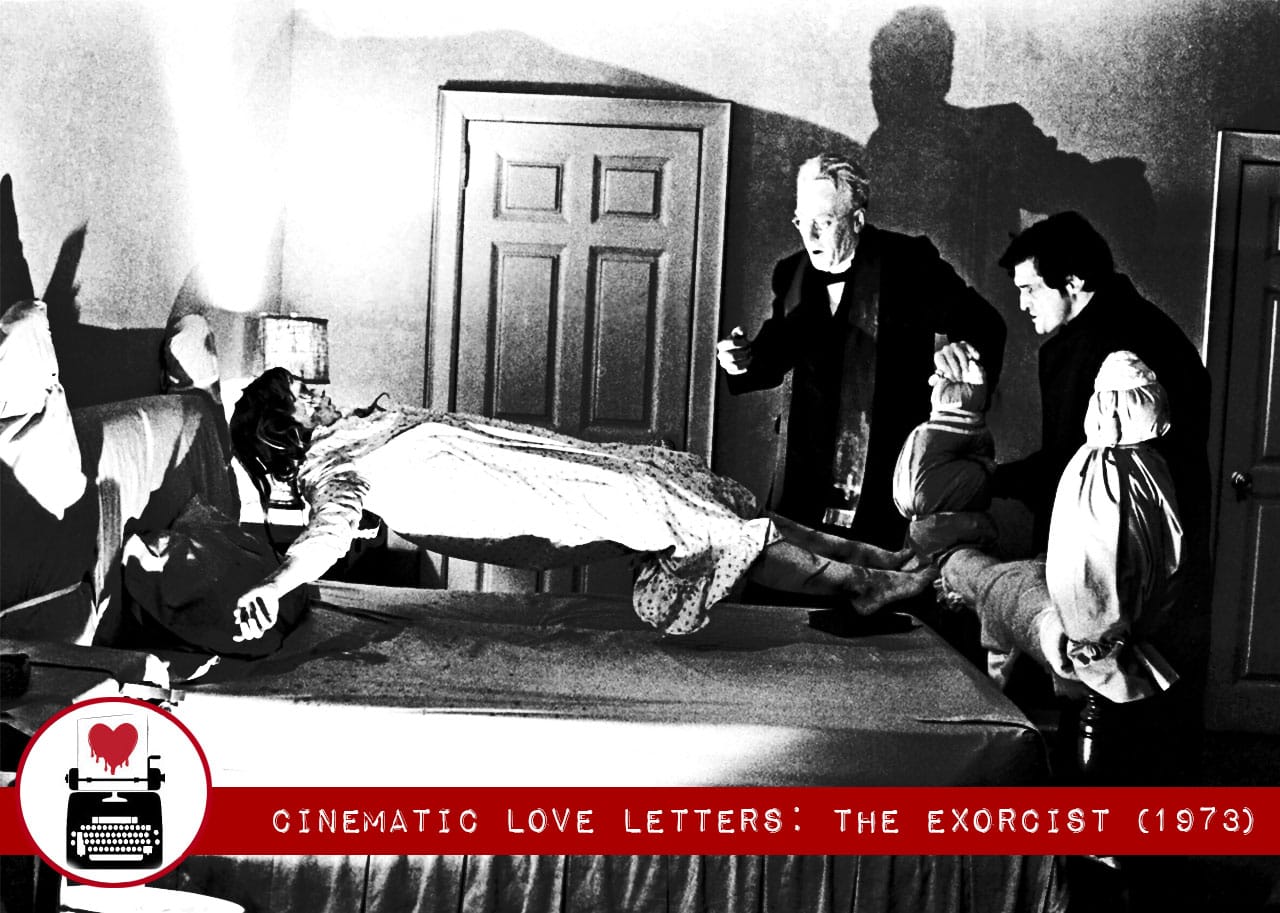
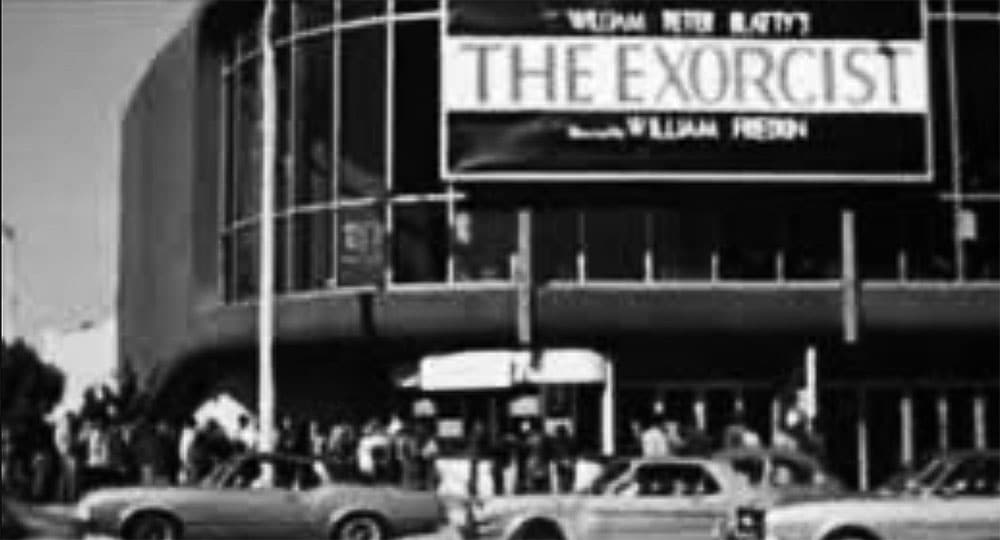
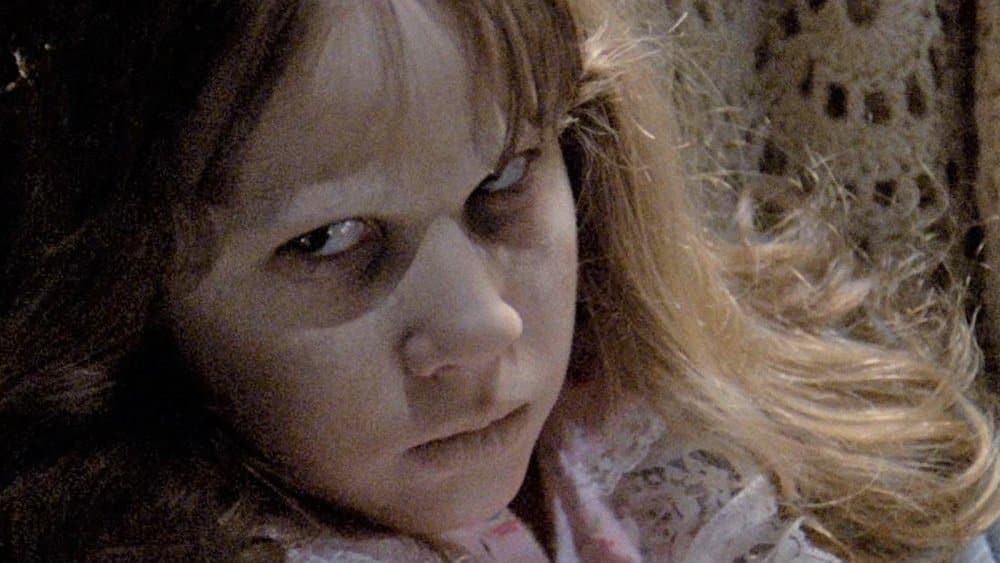
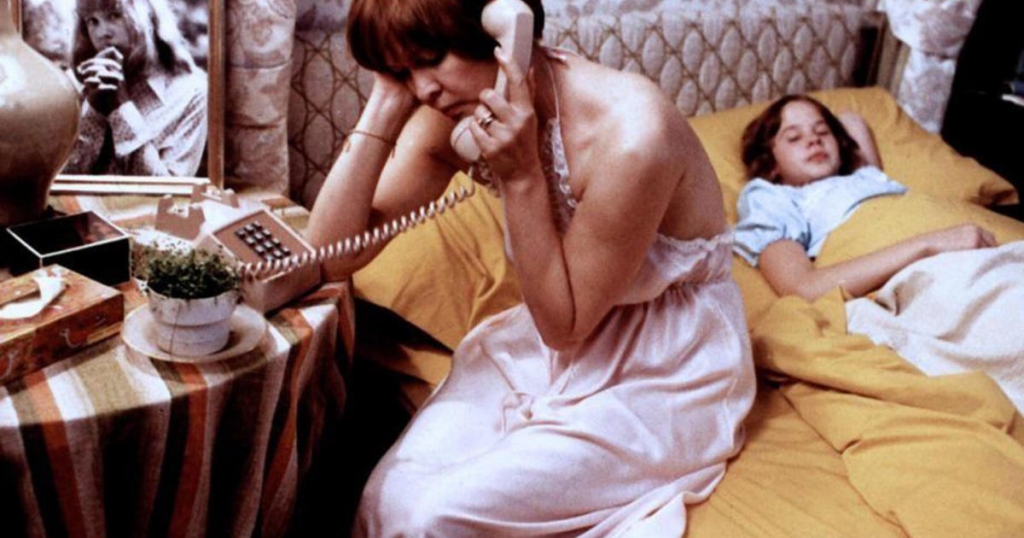
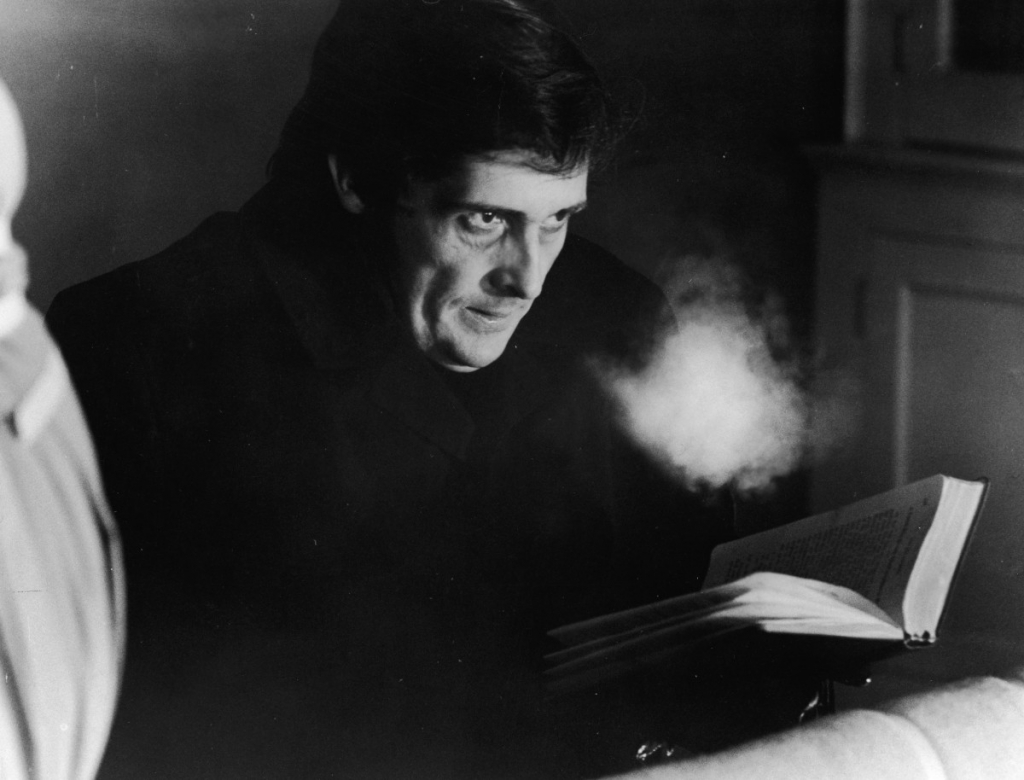
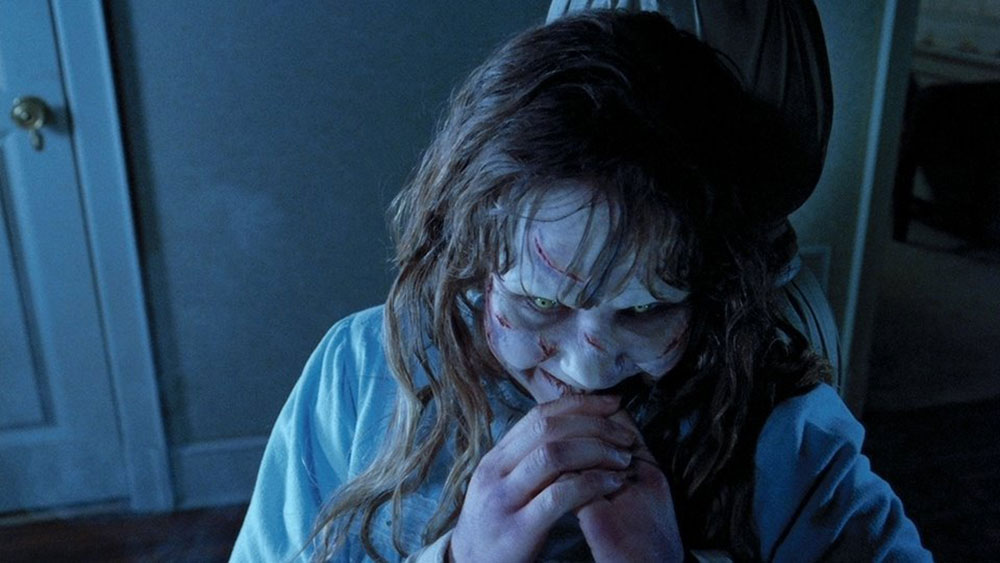
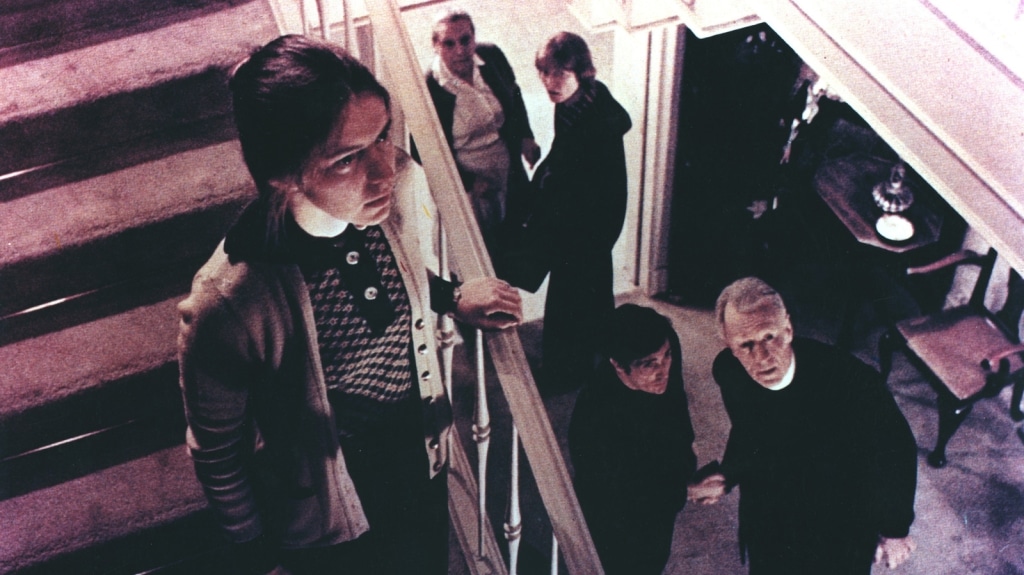
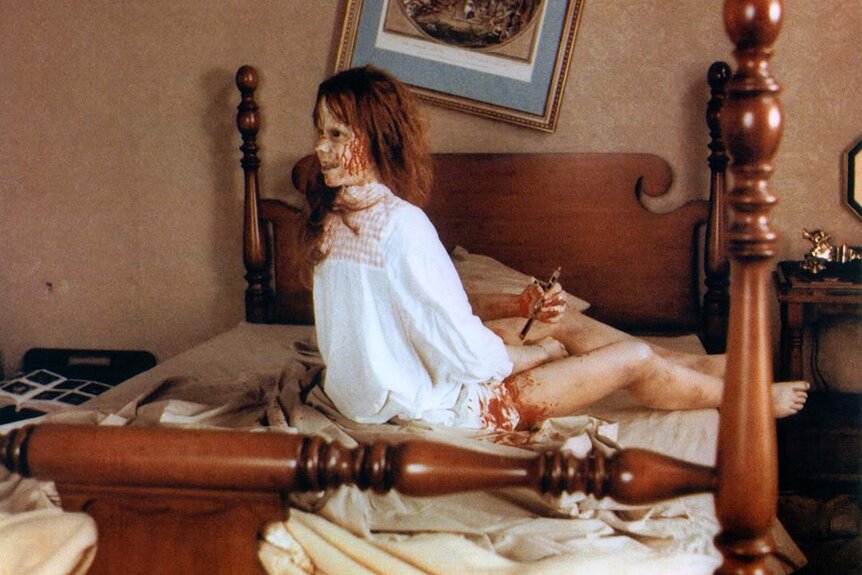
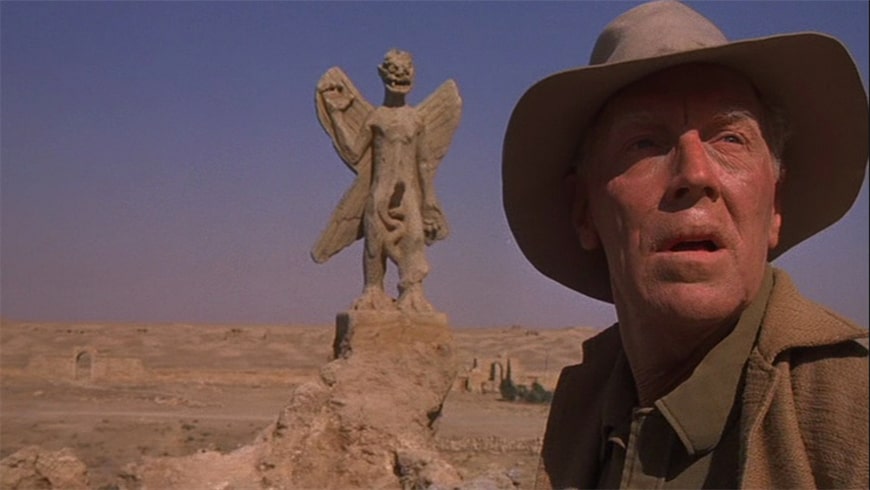
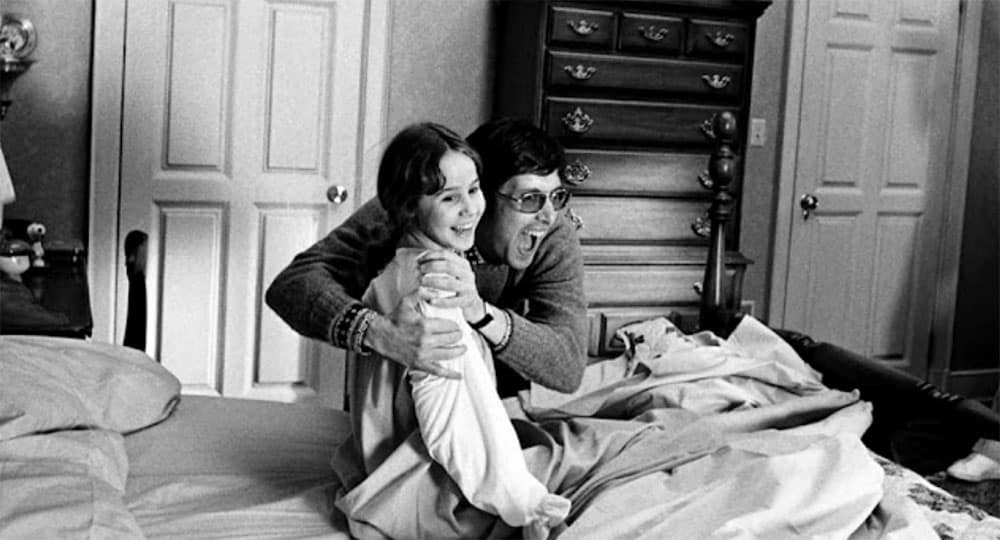
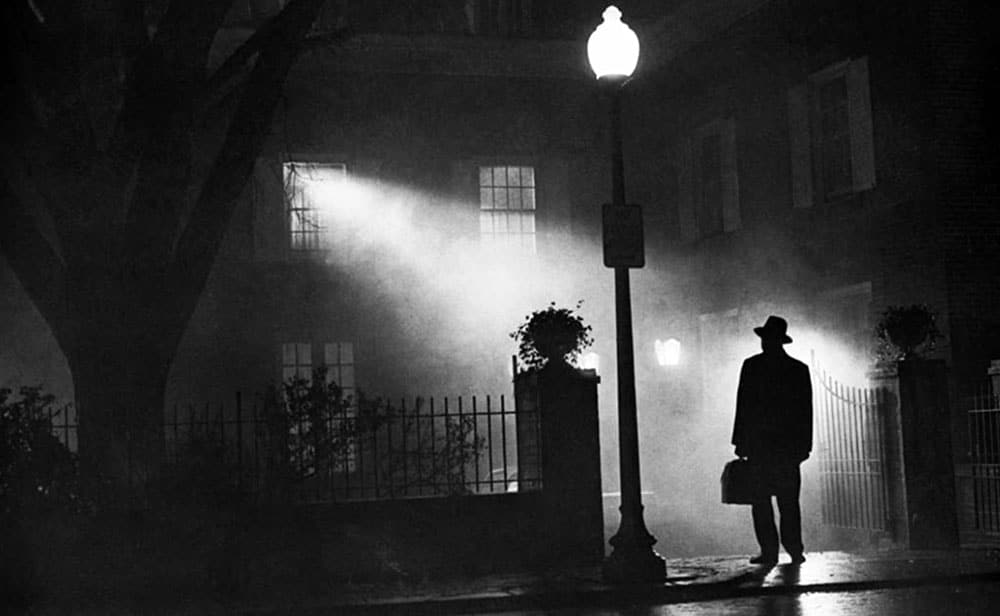
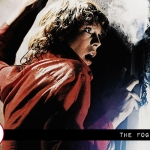
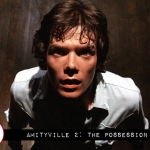

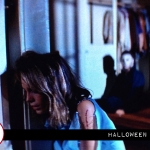







Follow Us!